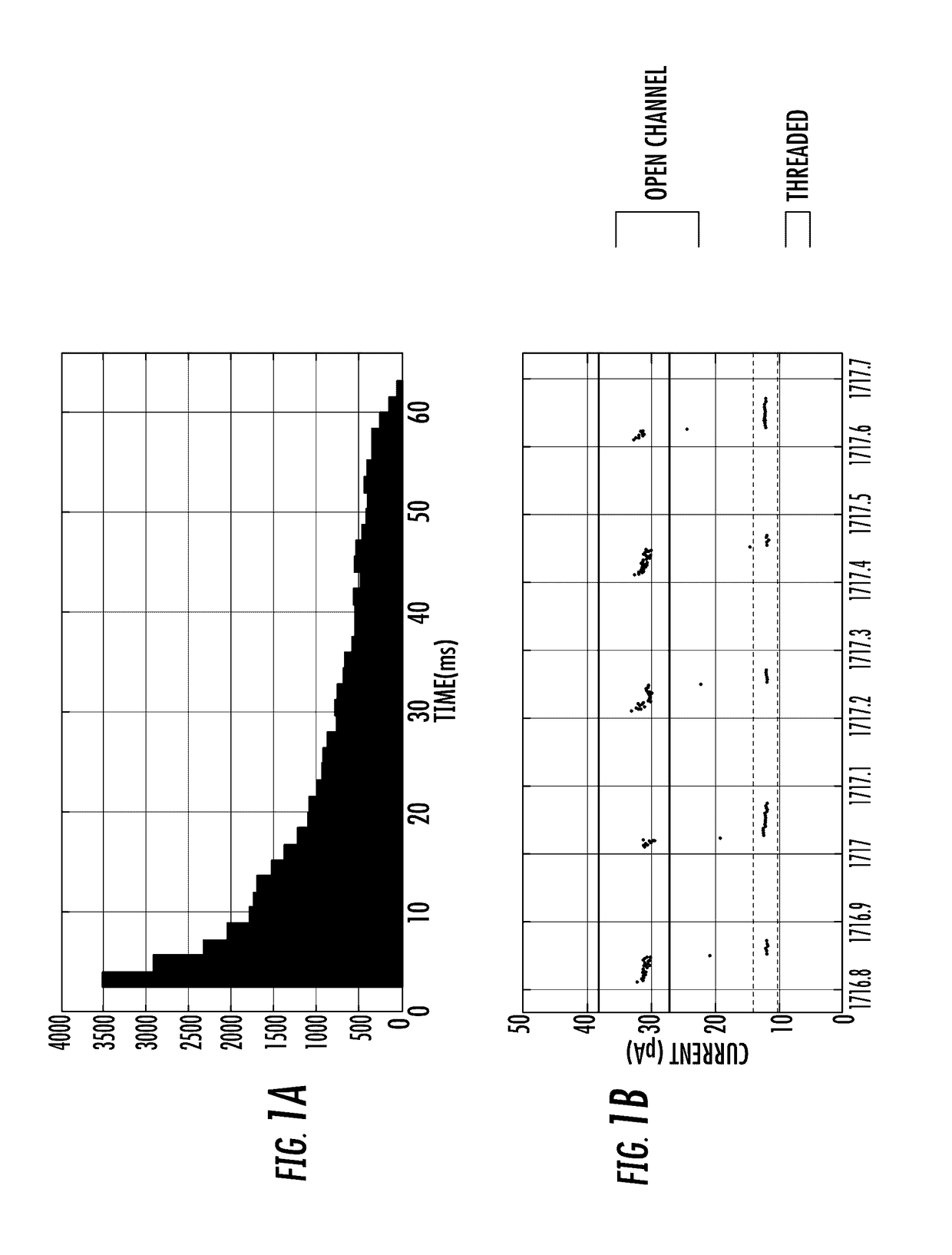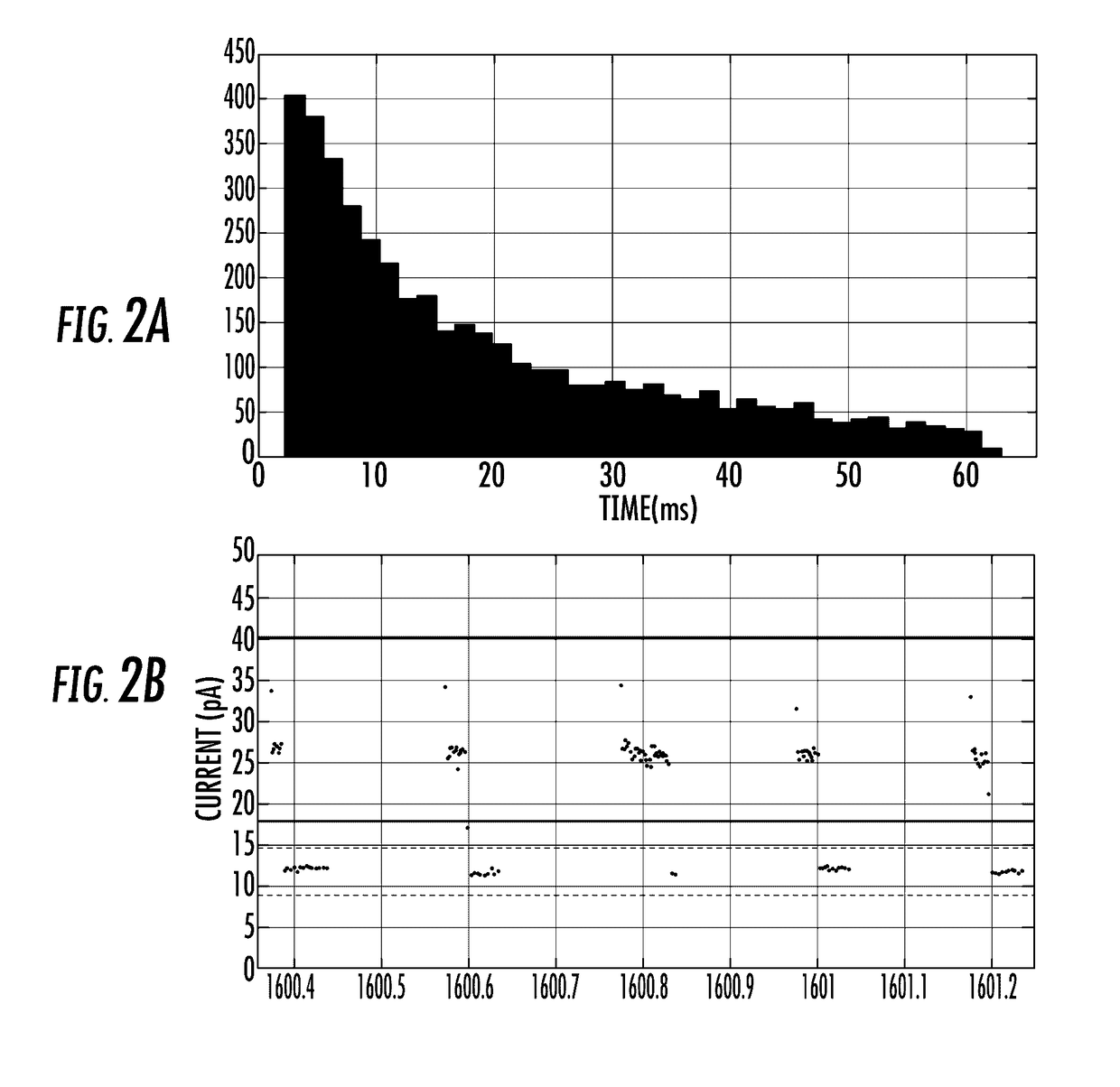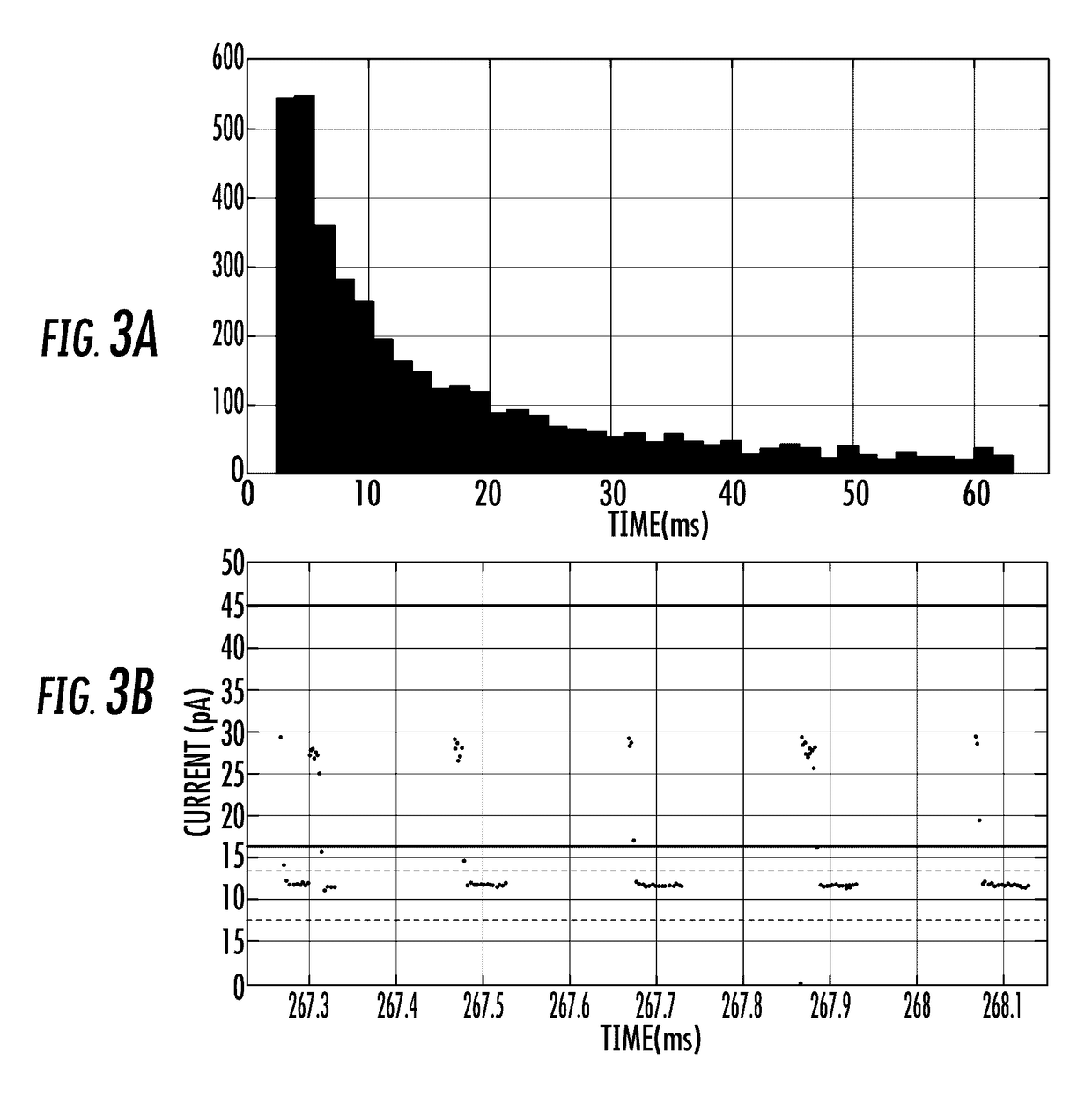Alpha-Hemolysin Variants
a technology of alpha-hemolysin and variants, which is applied in the field of alpha-hemolysin variants and hl mutated variants, can solve the problems of significant number of deletion errors and difficult tasks, and achieve the effect of reducing the time to capture and enhancing the time to thread
- Summary
- Abstract
- Description
- Claims
- Application Information
AI Technical Summary
Benefits of technology
Problems solved by technology
Method used
Image
Examples
example 1
Expression and Recovery
[0162]This example illustrates the expression and recovery of protein from bacterial host cells, e.g., E. coli.
[0163]DNA encoding the wild-type a-HL was purchased from a commercial source. The sequence was verified by sequencing.
[0164]Plasmid construction. The gene encoding either a wild-type or variant α-hemolysin was inserted into a pPR-IBA2 plasmid (IBA Life Sciences, Germany) under the control of T7 promoter.
[0165]Transformation. E. coli BL21 DE3 (from Life Technologies) cells were transformed with the expression vector comprising the DNA encoding the wild-type or variant α-hemolysin using techniques well known in the art. Briefly, the cells were thawed on ice (if frozen). Next, the desired DNA (in a suitable vectoriplasmid) was added directly into the competent cells (should not exceed 5% of that of the competent cells) and mixed by flicking the tube. The tubes were placed on ice for 20 minutes. Next, the cells were placed in a 42° C. water bath for 45 s...
example 2
T12 and / or N17 Variants
[0169]The following example details the introduction of a mutation at a desired residue.
[0170]Mutations. Site-directed mutagenesis was carried out using a QuikChange Multi Site-Directed Mutagenesis kit (Stratagene, La Jolla, Calif.) to prepare the T12 and / or N17 variants of SEQ ID NO:3.
[0171]The variants were expressed and purified as in Example 1.
example 3
[0172]This example describes the assembly of a nanopore comprising six a-HL variant subunits and one wild-type subunit.
[0173]The wild-type α-HL was expressed as described in Example 1 with SpyTag and a HisTag and purified on a cobalt affinity column using a cobalt elution buffer (200 mM NaCl, 300 mM imidazole, 50 mM Tris, pH 8). The desired a-HL variant was expressed as described in Example 1 with a StrepTag and purified using a Streptactin affinity column on the fast protein liquid chromatography (FPLC) using an elution buffer (50 mM tris, 5 mM desthiobiotin, 200 mM NaCl, pH 8). The proteins were stored at 4° C. if used within 5 days, otherwise 8% trehalose was added and the proteins were stored at −80° C.
[0174]Using approximately 20 mg of total protein, the wild-type a-HL and desired a-HL variant solutions were mixed together at the 1:6 ratio. Diphytanoylphosphatidylcholine (DPhPC) lipid was solubilized in 50 mM Tris, 200 mM NaCl, pH 8 or 150 mM KCl, 30 mM HEPE...
PUM
| Property | Measurement | Unit |
|---|---|---|
| Temperature | aaaaa | aaaaa |
| Temperature | aaaaa | aaaaa |
| Time | aaaaa | aaaaa |
Abstract
Description
Claims
Application Information
 Login to View More
Login to View More - R&D
- Intellectual Property
- Life Sciences
- Materials
- Tech Scout
- Unparalleled Data Quality
- Higher Quality Content
- 60% Fewer Hallucinations
Browse by: Latest US Patents, China's latest patents, Technical Efficacy Thesaurus, Application Domain, Technology Topic, Popular Technical Reports.
© 2025 PatSnap. All rights reserved.Legal|Privacy policy|Modern Slavery Act Transparency Statement|Sitemap|About US| Contact US: help@patsnap.com



